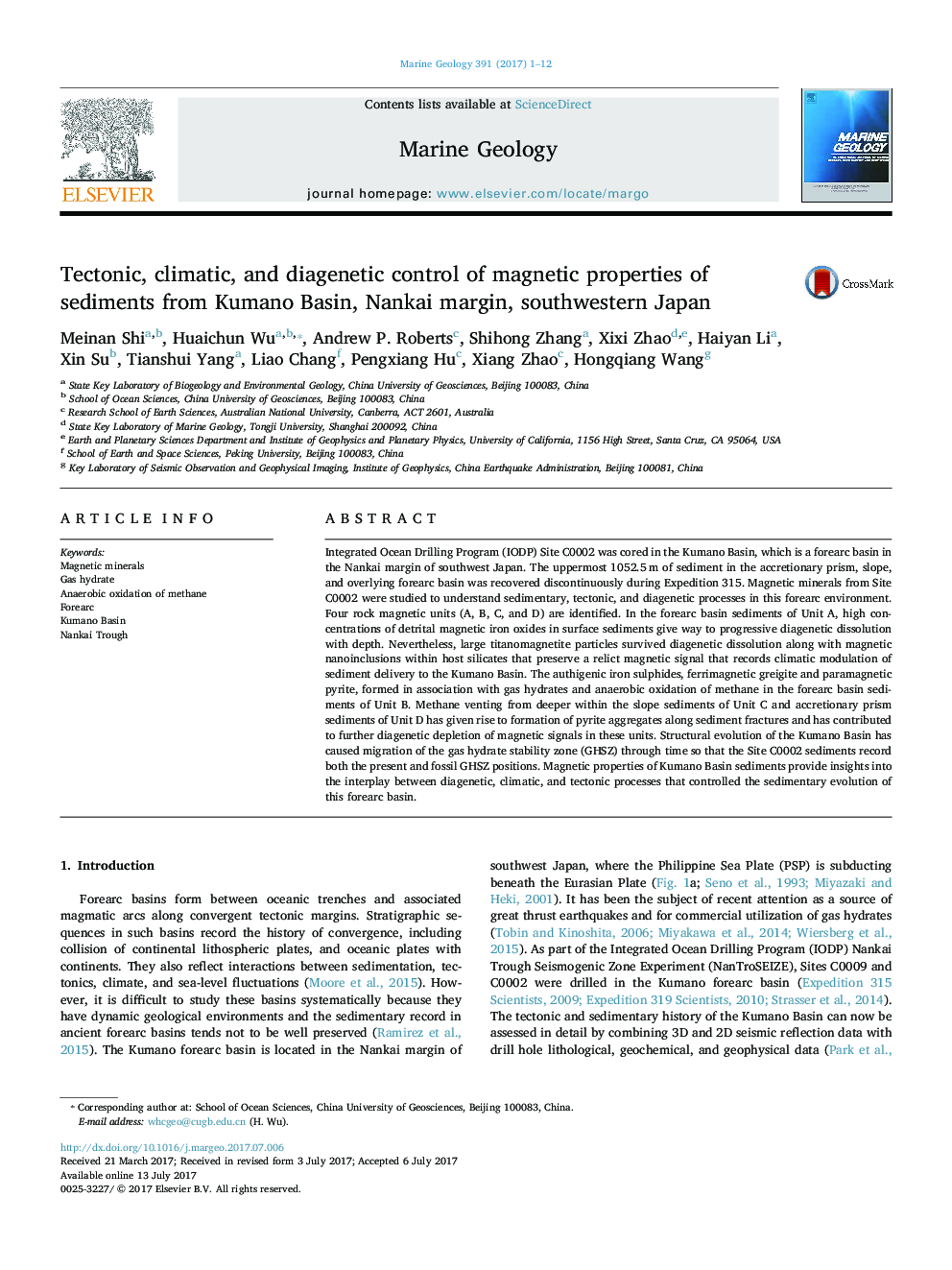| Article ID | Journal | Published Year | Pages | File Type |
|---|---|---|---|---|
| 5784495 | Marine Geology | 2017 | 12 Pages |
Abstract
Integrated Ocean Drilling Program (IODP) Site C0002 was cored in the Kumano Basin, which is a forearc basin in the Nankai margin of southwest Japan. The uppermost 1052.5Â m of sediment in the accretionary prism, slope, and overlying forearc basin was recovered discontinuously during Expedition 315. Magnetic minerals from Site C0002 were studied to understand sedimentary, tectonic, and diagenetic processes in this forearc environment. Four rock magnetic units (A, B, C, and D) are identified. In the forearc basin sediments of Unit A, high concentrations of detrital magnetic iron oxides in surface sediments give way to progressive diagenetic dissolution with depth. Nevertheless, large titanomagnetite particles survived diagenetic dissolution along with magnetic nanoinclusions within host silicates that preserve a relict magnetic signal that records climatic modulation of sediment delivery to the Kumano Basin. The authigenic iron sulphides, ferrimagnetic greigite and paramagnetic pyrite, formed in association with gas hydrates and anaerobic oxidation of methane in the forearc basin sediments of Unit B. Methane venting from deeper within the slope sediments of Unit C and accretionary prism sediments of Unit D has given rise to formation of pyrite aggregates along sediment fractures and has contributed to further diagenetic depletion of magnetic signals in these units. Structural evolution of the Kumano Basin has caused migration of the gas hydrate stability zone (GHSZ) through time so that the Site C0002 sediments record both the present and fossil GHSZ positions. Magnetic properties of Kumano Basin sediments provide insights into the interplay between diagenetic, climatic, and tectonic processes that controlled the sedimentary evolution of this forearc basin.
Related Topics
Physical Sciences and Engineering
Earth and Planetary Sciences
Geochemistry and Petrology
Authors
Meinan Shi, Huaichun Wu, Andrew P. Roberts, Shihong Zhang, Xixi Zhao, Haiyan Li, Xin Su, Tianshui Yang, Liao Chang, Pengxiang Hu, Xiang Zhao, Hongqiang Wang,
